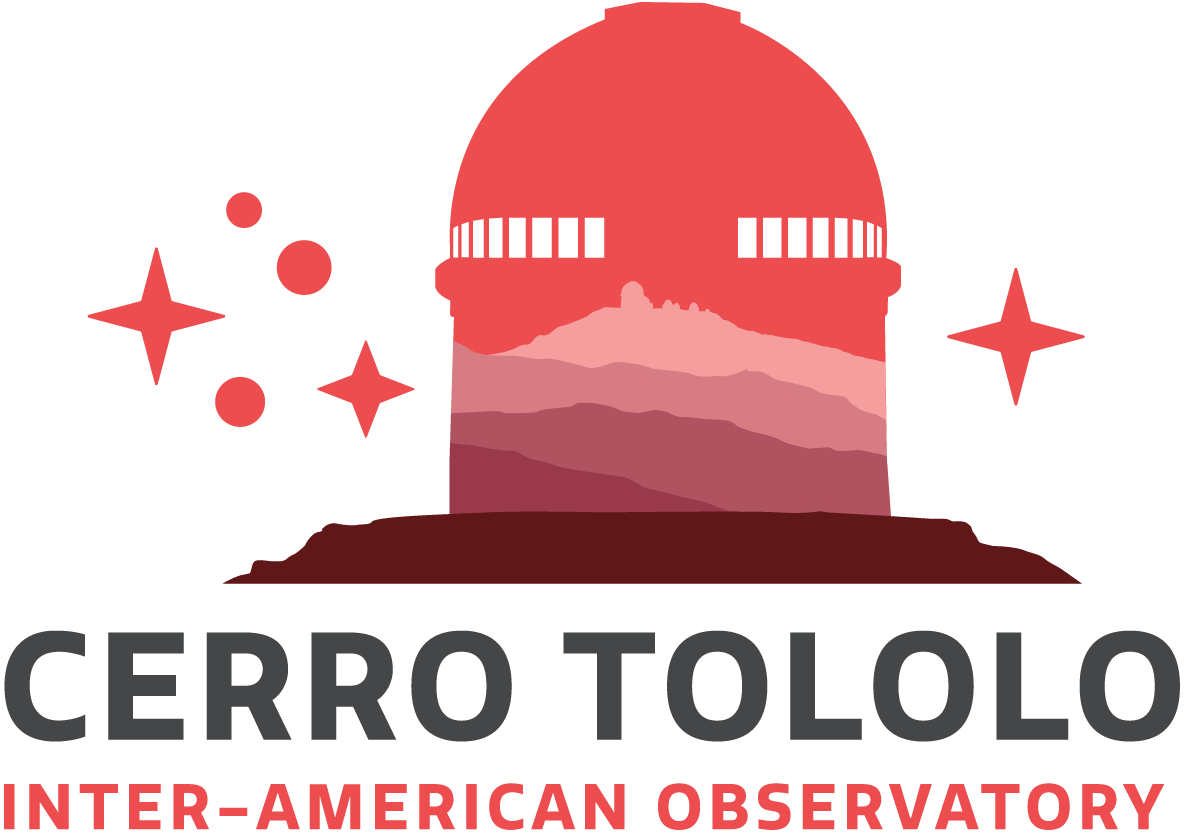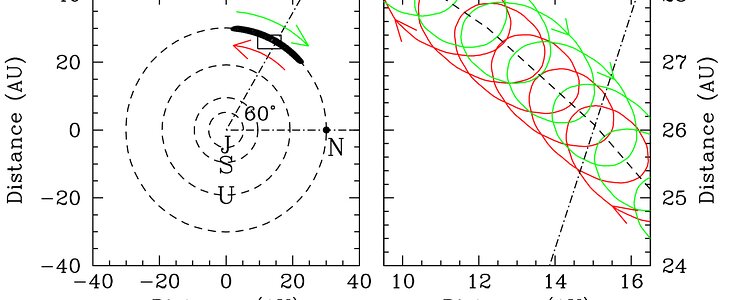First Neptune Trojan Discovered
8 Enero 2003
Astronomers have discovered a small body orbiting the Sun at the distance of Neptune whose orbit makes it the first known member of a long-sought population of objects known as Neptune Trojans.
This small body, known as 2001 QR322, leads Neptune around its orbit in such a way as to maintain—on average—approximately equal distance from Neptune and the Sun. As such, it mimics the Trojan asteroids of Jupiter, which orbit the Sun in two clouds approximately 60 degrees ahead of and behind Jupiter. The first Jovian Trojan was discovered in 1906, and approximately 1,560 such objects are known today. However, until the discovery of 2001 QR322, Trojan-like objects associated with other giant planets had not been found.
2001 QR322 was discovered in the course of the Deep Ecliptic Survey, a NASA-funded survey of the outer solar system that uses the National Science Foundation’s telescopes at Kitt Peak National Observatory near Tucson, AZ, and Cerro Tololo Inter-American Observatory in Chile.
Astronomers from Lowell Observatory, the Massachusetts Institute of Technology, the University of California at Berkeley, the University of Hawaii, the University of Pennsylvania, and the Large Binocular Telescope Observatory comprise the Deep Ecliptic Survey team.
The team first detected 2001 QR322 on August 21, 2001, in deep digital images taken with the 4-meter Blanco Telescope at Cerro Tololo by Marc Buie, Robert Millis, and Lawrence Wasserman of Lowell Observatory. However, several subsequent observations, made with a variety of telescopes over the past 16 months, coupled with numerical orbit integrations of the trajectory of the asteroid, were required to prove that 2001 QR322 is indeed a Neptune Trojan. The object is estimated to be approximately 230 kilometers (140 miles) in diameter and, like Neptune, requires about 166 years to complete each circuit of its orbit.
“Neptunian Trojans were long suspected to exist and it is gratifying to finally know that they do,” says team member Eugene Chiang of the University of California at Berkeley. “The orbit of 2001 QR322 is remarkably stable; projections of its trajectory into the future reveal that it can co-orbit with Neptune for at least billions of years. It is likely that 2001 QR322 is a dynamically pristine object whose orbital eccentricity and inclination have been largely unaltered by processes that afflicted the majority of bodies in the outer solar system.”
A graphic that describes the orbit of 2001 QR322 is available above.
Kitt Peak and Cerro Tololo Inter-American Observatory are part of the National Optical Astronomy Observatory (NOAO), which is operated by the Association of Universities for Research in Astronomy (AURA), Inc., under a cooperative agreement with the National Science Foundation.
The survey team’s research is supported in part by the NASA Planetary Astronomy Program through grants to Lowell Observatory, the Massachusetts Institute of Technology, and the University of Hawaii; by the National Science Foundation through a grant to the University of California at Berkeley; by the Space Telescope Science Institute through grants to University of Pennsylvania and by the University of California at Berkeley; by the University of California at Berkeley through a Faculty Research Award; and by the Friends of Lowell Observatory.
Notas
Marc Buie, Robert Millis, and Larry Wasserman can be reached at 928/774-3358 or via email at: buie@lowell.edu, rlm@lowell.edu, and lhw@lowell.edu
Más Información
For more information about the Deep Ecliptic Survey, see: http://www.lowell.edu/Research/DES/
Enlaces
- Eugene Chiang can be reached at 510/642-2131 or via email at: echiang@astron.berkeley.edu
Contactos
Douglas Isbell
Public Information OfficerNational Optical Astronomy Observatory
Tel: 520/318-8214
Correo electrónico: disbell@noao.edu
Kristi Phillips
Lowell Observatory
Tel: 928/774-3358, x232
Correo electrónico: phillips@lowell.edu
About the Release
| Release No.: | noao0302 |
| Legacy ID: | NOAO 03-02 |
| Nombre: | 2001 QR322 |
| Facility: | Víctor M. Blanco 4-meter Telescope |
| Science data: | 2003AJ....126..430C |



